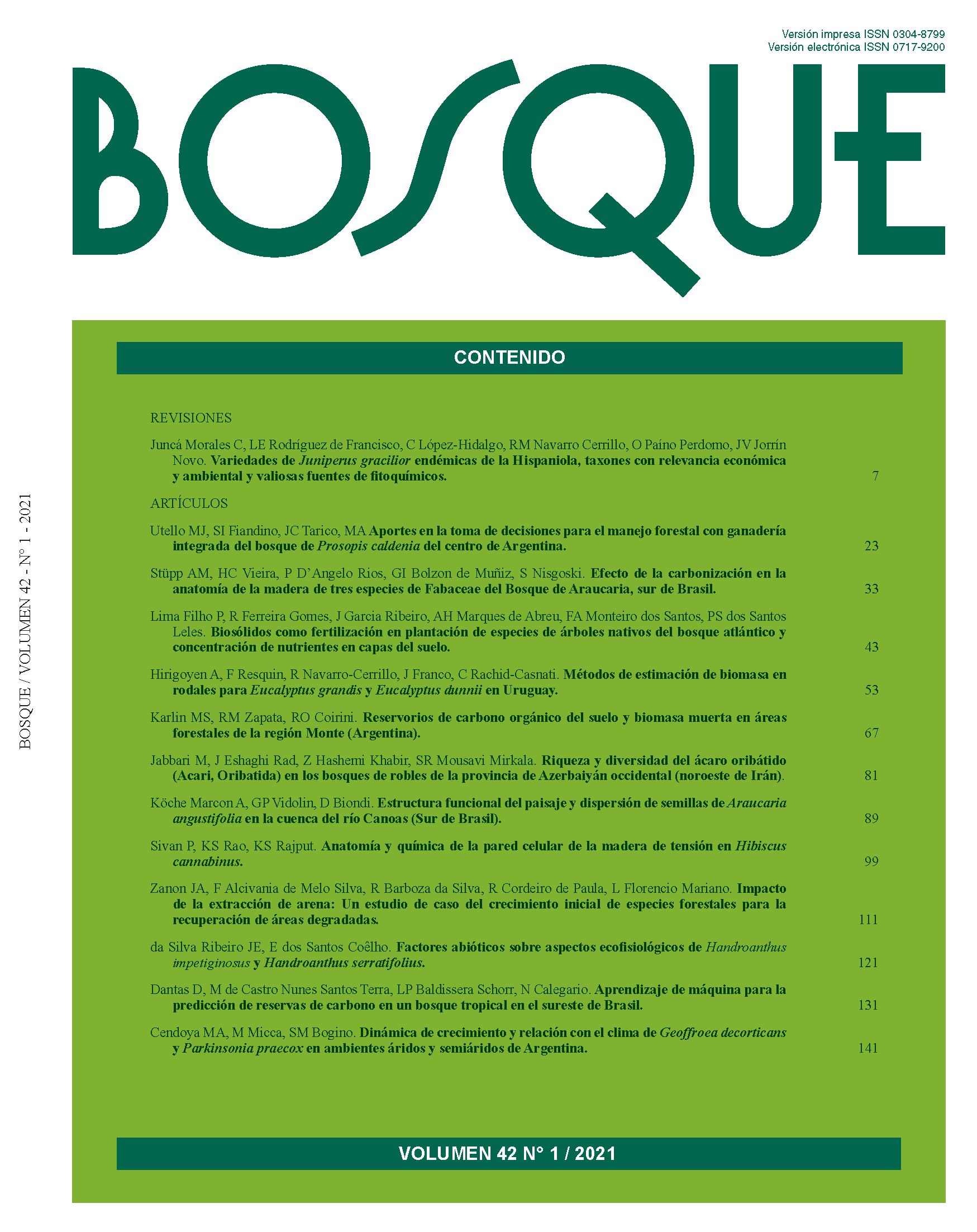Functional structure of the landscape and seed dispersal of Araucaria angustifolia in Canoas River Basin (Southern Brazil)
Main Article Content
Abstract
Araucaria angustifolia is one of the main species of the Mixed Ombrophilous Forest and has been threatened by extinction. Additionally, a low number of regenerating individuals can be seen in forest remnants. For these reasons, this study aimed at evaluating the functional structure of Canoas River Basin (state of Santa Catarina, Brazil) using landscape ecology metrics, and at verifying whether or not the proximity between remnants is compatible with this species displacement of the main dispersers. Thus, a landscape structure analysis was performed using metrics of area, shape, edge and connectivity of habitat fragments based on satellite images. Landscape metrics were related to maximum distances of displacement of dispersers and to effective dispersion distance based on a genetic estimate derived from secondary data. Results indicate that Canoas River Basin has natural vegetation cover in 19.6 % of its territory and is highly fragmented. A total of 80.8 % of the fragments have an area smaller than 50 ha. The proximity between patches concerning the mean displacement of dispersers (87 m) is zero for 100 % of fragments. The proximity is zero in 43.5 % landscape, considering the effective seed dispersion based on the genetic estimate of dispersion distance. Therefore, the connectivity between fragments is very low, which may justify the fact that this species is often not found in the regenerating components of forest inventories.

